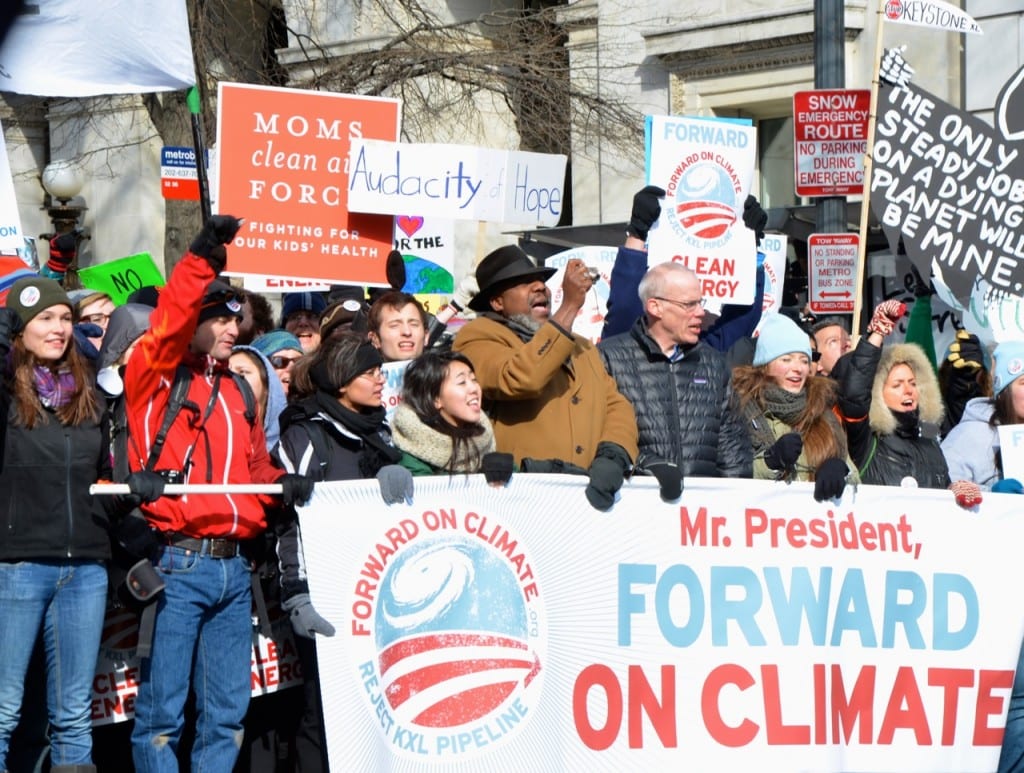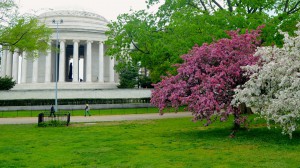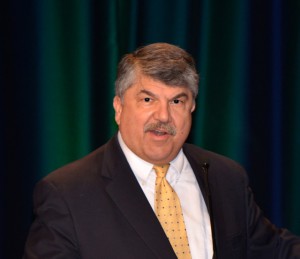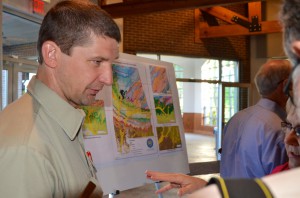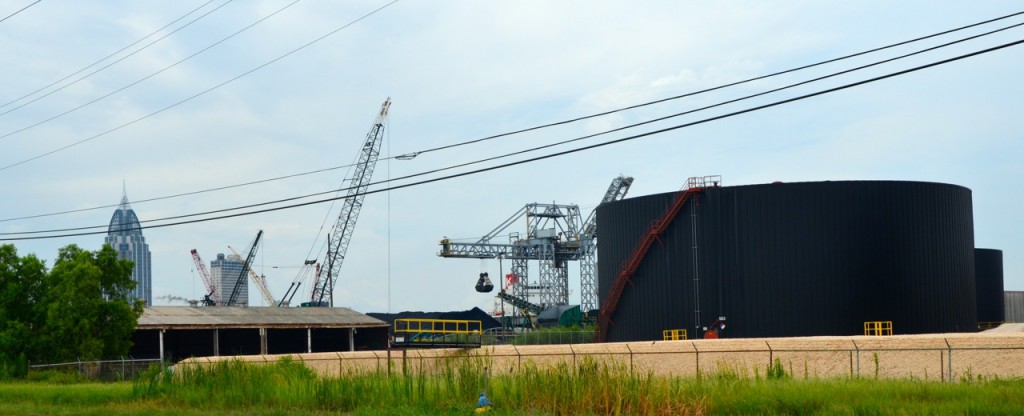The Big Picture –
By Glynn Wilson –
It’s been one of the most interesting and groundbreaking years in a long time for environmental activism, environmental journalism and the Sierra Club nationally and in my home state of Alabama.
Since I made the decision to cross the line and join the club to get personally involved as a publisher to make some things happen in January and the Alabama chapter voted to sponsor this news site to help build the budget for the alternative, independent Web Press here, I’ve made the trek to the nation’s capital twice to cover stories of national import.
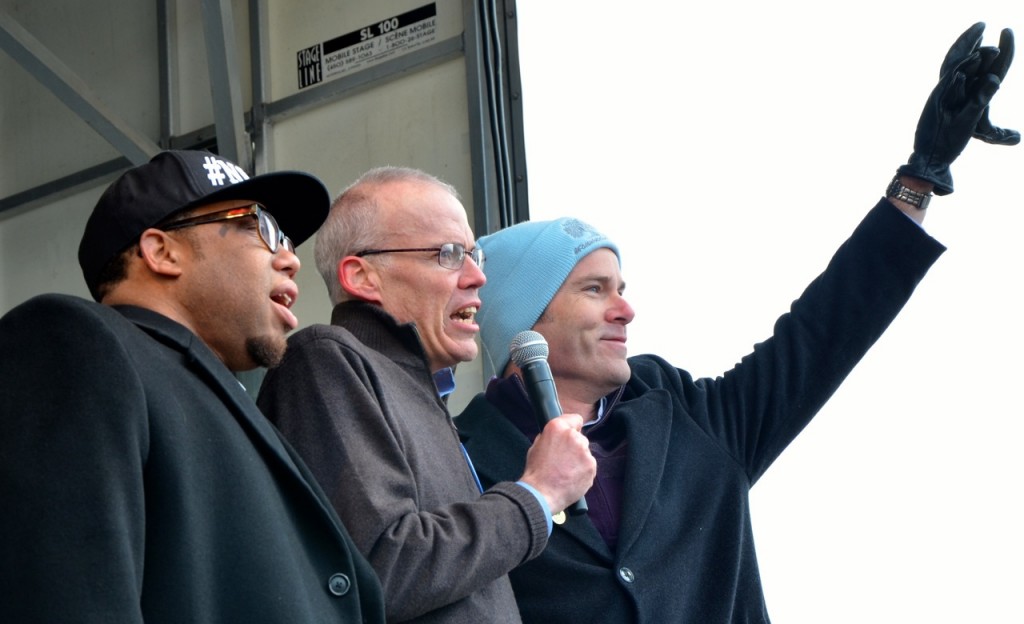
The Sierra Club’s Michael Brune stands with Bill McKibben and other leaders of the climate change march on Washington
In February, I drove the camper van to D.C. and braved the bone-chilling cold to cover the climate change march on the White House led by the Sierra Club and 350.org. During President’s Day weekend and in freezing temperatures and against a brutal wind, more than 35,000 activists marched from the Washington Monument around the White House to support immediate action to contain climate change due to global warming from the burning of fossil fuels.
About 35,000 March on Washington for Action on Climate Change
Then in April, I flew to Washington and covered the Good Jobs, Green Jobs conference where I witnessed the BlueGreen Coalition of union leaders and environmental group leaders come together to build a political coalition to create the green jobs of the future and talk about saving Democracy itself. Some of the most powerful union leaders and environmentalists in the country came together in Washington, D.C. to find common ground on the critical question of how to create jobs and improve the economy while at the same time protecting the environment of the U.S. for the future. And everybody there also talked about reclaiming democracy, a subject I’ve been writing about for years and will have a book out this year on the subject.
The central message was that the country faces significant challenges in trying to create jobs, rebuild the nation’s infrastructure and prepare for the inevitability of climate change due to global warming from the burning of fossil fuels. That is the question for the leaders of the nation’s largest environmental organizations and labor unions as they struggle to build a national movement to combat climate change while creating good-paying jobs in every corner of the country.
I saw and captured on video the Sierra Club’s Michael Brune at the same table with United Steelworkers president Leo W. Gerard and Larry Cohen, president of the Communications Workers of America. This event was so powerful and extraordinary that it was shocking that no other major news organization in the country even bothered to show up and cover it.
Then I witnessed something else that was so unexpected nobody else covered it either. The head of the largest and most powerful coalition of unions in America voiced his unequivocal support for the growing alliance between organized labor and the environmental community under the umbrella of the BlueGreen Alliance, a 15 million member national organization represented by environmentalists and union members. In the closing session, the AFL-CIO’s Richard Trumka acknowledged climate change due to global warming is a serious problem backed up by science, and agreed to join hands with national environmental groups like the Sierra Club in the fight to create high paying, green jobs for American workers.
“For the record, I want to make it crystal clear that we firmly believe in and trust a science based approach to regulating our environment and we know that climate change is real,†Trumka said. “We also know that responding to climate change will give America a competitive economic advantage in the global marketplace.â€
AFL-CIO’s Richard Trumka Joins Labor With Environmentalists in BlueGreen Alliance
Also in April, in a culmination of a nearly year-long investigation into a proposed plan to open up the national forests to oil and gas drilling, I produced a 6,000 word investigative news feature with lots of photos and a video on the U.S. Forest Service-Bureau of Land Management plan to open up the Talladega National Forest to drilling with the potential for hydraulic fracturing or “fracking.”
Fracking in the Talladega National Forest is Not in the National, State or Local Interest
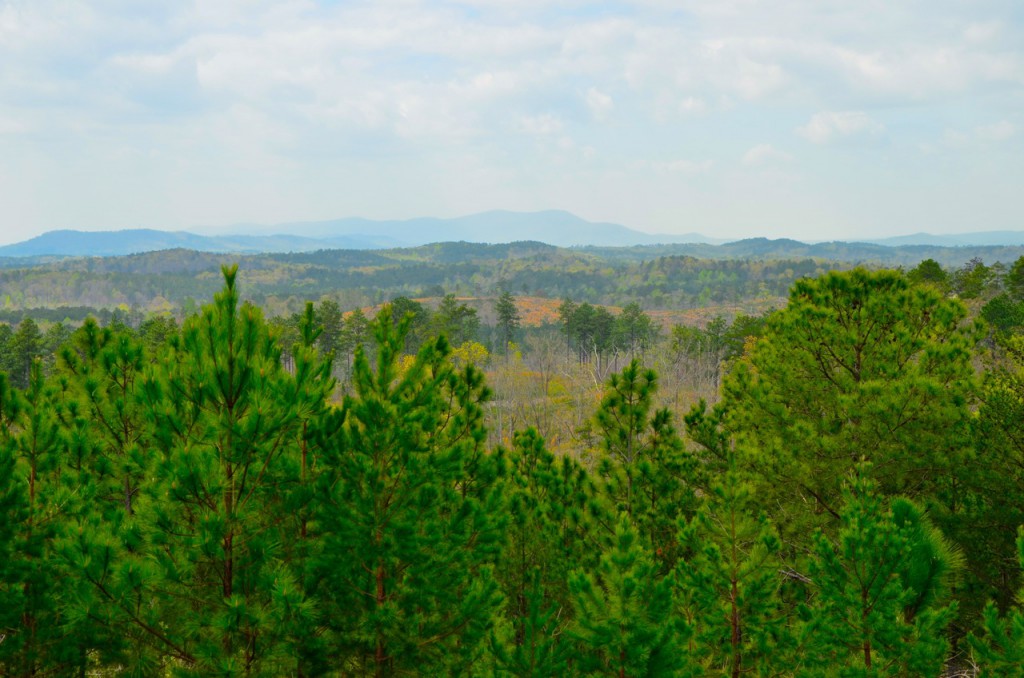
A Future Fracking Zone? Looking out over the national forest from the Talladega Scenic Drive toward Mt. Cheaha, the highest peak in Alabama’s Appalachian Mountains off in the distance (click on the images for a larger view) –
In late April, I traveled to Montgomery and caught Forest Supervisor Steve Lohr admit on video that he alone came up with the flawed map for the potential fracking zone. This was news to everyone, including the professional environmental groups charged with following these things and educating the public about them.
Fracking Leases Proposed for National Forests White Washed at ‘Public Meeting’
In response to that original reporting, the Alabama Sierra Club voted to write a letter formally asking the U.S. Forest Service to withdraw a plan to lease 43,000 acres for oil and gas exploration in the Talladega National Forest and to further consider banning the practice of fracking in the new Forest Management Plan in the works for 2014.
Sierra Club Asks U.S. Forest Service to Withdraw Oil and Gas Lease Sale in Talladega National Forest
In early July, the Forest Service responded to that letter and indicated not only that the 43,000 acre map in the Talladega National Forest is a dead issue, but it has become clear that no oil and gas leases will be issued for any national forest in Alabama this year. This is how it’s done, folks. Declare victory and move on.
Forest Service Backs Down on Oil and Gas Leases in the Talladega National Forest
Also in July, I traveled to Mobile, Alabama to cover the big town hall public meeting on the proposal to build an oil pipeline through that area’s drinking water reservoir and the alarming expansion of petrochemical storage and transportation hubs in the city, and this newspaper of record style coverage with photos and video received a massive response from people not only in Alabama, but all over the country and the world. Even the national Sierra Club leadership Tweeted this story, realizing for the first time that even if the Keystone XL pipeline is stopped, Canadian tar sands crude is already making its way to the Gulf Coast by rail.
Back in June, it was almost astonishing to see President Obama’s major speech on Global Climate Change, since some of the language came right out of Sierra Club Executive Director Michael Brune’s columns. I wrote the most comprehensive story in the country on the president’s address.
President Obama Outlines Ambitious Plan to Combat Global Climate Change
Then I was almost taken aback by the lead in imagery from Brune’s column of May 17.
The Overview Effect: Looking at Earth from Space Creates a ‘Cognitive Shift’ in Perception
It is obvious that the new management of the Sierra Club in San Francisco and Washington is making a difference and getting the pressure directly on the White House to begin to deal with global warming and climate change for the first time. This is exactly the reason I came to the conclusion to join up with this organization over any other. The new management of the national Sierra Club realizes that the hour is late and is not afraid to do what it takes to get the public’s attention on this most critical issue of our time.
It is now clear that new efforts on the part of the Alabama Chapter of the Sierra Club are also beginning to make a difference, although down here in Alabamaland, there are still some holdouts to change and a fear of new ways of getting information out.
“Fear not, therefore, to try the mountain-passes,” Sierra Club founder John Muir once wrote. “They will kill care, save you from deadly apathy, set you free, and call forth every faculty into vigorous, enthusiastic action.”
We must not fear change or an open flow of information if we want to help create a better world into the future.
A truncated version of this column first ran in the Alabama Sierran, the online monthly newsletter of the Alabama Sierra Club. The critical point here is to point out that without the funding, none of this reporting would have been possible. Some of these stories would not have been covered at all, certainly not as comprehensively, or “objectively” — in the scientific sense.


